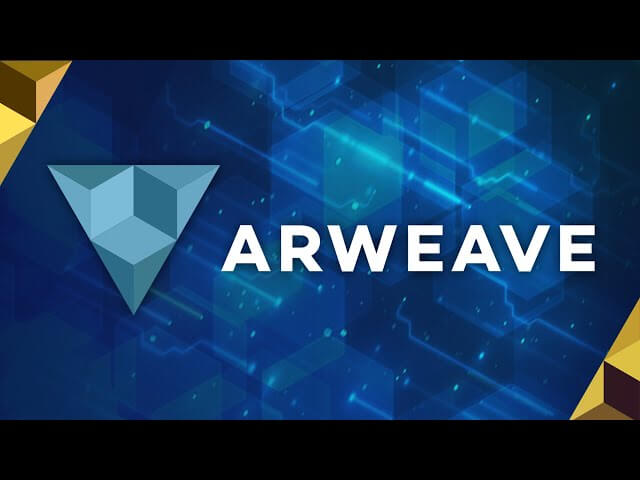ARWEAVE (AR)
A permanent decentralised web.Arweave (AR) is a decentralised data storage protocol built through blockweave technology.

Background Behind Arweave (AR)
The project was first announced as Archain in 2017 and later rebranded as Arweave in February 2018, officially launching in June later that year. The founders of this project are Sam Williams and William Jones, both of whom were PHD candidates at the University of Kent.
Sam Williams had extensive experience in distributed/decentralised systems and also developed an operating system known as Hydroos. William Jones on the other hand is known for his work on graph theory and neutral networking. Arweave mainnet launched in June 2018 with 1800 participants chosen from around the world. In November of 2019 several venture capital firms funded the project and almost 5 million dollars was raised another 8.3 million dollars raised six months later.
The project started with a very centralised leadership, however a decentralised autonomous organisation was launched in January 2020 which consists of core members of the community and they can discuss and make decisions about the development of the network and its ecosystem.
Arweave (AR) Basics
arweave is in direct competition with the likes of Filecoin and Sia, both of which also provide decentralised data storage options. Furthermore the real competition is with the centralised industry giants such as Google and dropbox, contrary to just being a data storage protocol. Arweave aims to create the permaweb, it will be a version of the internet that is easy to access hosts sites and apps cheaply and forever retains its permanence.
Permaweb is a layer that is built upon Arweave’s global permanent hard drive. Another unique aspect of Arweave is that the data stored on it, can easily be accessed through any browser unlike traditional crypto-based projects which requires a specialised wallet or service.
Most storage providers, including storage coin projects, charge monthly or yearly fees. Arweave turns the model on its head by charging one up-front fee for permanent storage. Storage on Arweave is paid for using the protocol’s AR tokens.
The obvious question here is how a service can provide storage indefinitely for a single fee. Arweave’s solution is a sustainable endowment. Most of its storage fees are deposited into this endowment, which grows by earning interest. Arweave pays future storage costs using the interest generated by the endowment.
However, there is fine print to the storage contract. Arweave guarantees to store data for at least 200 years or as long as the endowment has enough value. If its calculations are accurate, then it should be able to store data permanently. It guarantees 200 years because that’s a conservative estimate.
Arweave Blockweave
Unlike traditional blockchain networks where a chain of blocks contain all the data and transactions a blockweave network is a bit different. In the case of Arweave it stores it in the graph of blocks and each block is connected to two earlier blocks thus forming a structure known as blockweave.
Arweave (AR) Staking
Arweave has a PoW algorithm, so has no staking. As part of the algorithm miners are asked to retrieve random pieces of data they are storing.
Arweave (AR) Mining
Arweave is a permanent data storage network. This document describes version 2.6, an upgrade to the network that achieves the following objectives: Lowers the storage acquisition cost for the network by encouraging miners to use cheaper drives to store data, rather than optimising for drive speed.
Arweave (AR) transactions fee Speed
Additionally, Arweave claims that its network can handle up to 5,000 transactions per second (TPS) and store data at a fraction of the cost of conventional servers, making it, the project says, both cost-effective and fast.
Arweave (AR) Supply
Arweave has a circulating supply of about 34 million AR coins and a maximum supply of 66 million AR coins.
Arweave (AR) Security and Safety
The native Arweave token (AR) token is a multi-utility token used throughout the Arweave ecosystem. Moreover, the AR token provides a crucial foundation for network security through incentivization. With two primary use cases, the AR token rewards network miners and pays for data upload fees within the network.28 Aug 2021
To maintain stability and security across the network, Arweave uses the new Succinct Proofs of Random Access (SPoRA) consensus mechanism. It is also referred to as a Permaweb, which is a community-owned network that operates like a traditional web. Users can add data to the Permaweb, and the data cannot be changed or deleted, even by the creator.
Arweave (AR) Volatility
Arweave Crypto Coin volatility depicts how high the prices fluctuate around the mean or its average price. In other words, it is a statistical measure of the.
Review and Final Thoughts on Arweave (AR)
To sum it all up Arweave is a new type of technology that uses a form of database to store data that cannot be deleted or changed and uses economic to incentivise people to store the data for long periods of time for the first time ever, this combination makes either public or private data permanent.
Arweave would describe itself as a novel data storage blockchain protocol enabling a permanent internet and creating truly permanent data storage for the first time, it is a pay once forever storage model.
The technology and design of Arweave and its system doesn’t need to be intimidating to the average person, in fact the more we understand it the better we will see how innovative and useful it really is. More than anything Arweave is trying to solve the problem of reliable long-term data storage. There is nothing like this on the market; it really is a new type of relationship to data.

